- 02 9712 1736
- [email protected]
- 212 Great North Road, Five Dock, NSW 2046
- Open 7 days a week
Back pain can happen to anyone at any time. It doesn’t matter if you’re young or old. You might be lifting groceries or playing sports. Maybe you were just bending down to pick something up. Then it happens – that sudden twinge in your back. Your muscles tighten up. Pain shoots through your lower back. You’ve just experienced a back muscle strain.
Back muscle strain is one of the most common health issues in the world. Studies show that about 80% of people will deal with back pain at some point. Many of these cases are due to muscle strains. This blog will take you through the journey of a strained back muscle. We’ll explore what causes it, how it feels, and most importantly, how to heal it.
Back muscle strains happen when muscles are stretched or torn from improper lifting, sudden movements, poor posture, or repetitive motions. Recovery follows a predictable timeline: acute phase (first 72 hours), subacute phase (3 days to 3 weeks), and remodeling phase (3 weeks to months). Effective treatment starts with the R.I.C.E. protocol (Rest, Ice, Compression, Elevation), followed by gentle stretching and heat therapy. Massage therapy increases circulation and releases tension, while chiropractic care improves the spinal joint movement. Combining these approaches creates powerful results, as massage relaxes muscles before adjustment. Prevention includes maintaining good posture, strengthening core muscles, proper lifting techniques, regular stretching, and taking breaks during repetitive tasks. Most strains heal within 4-6 weeks with proper care.
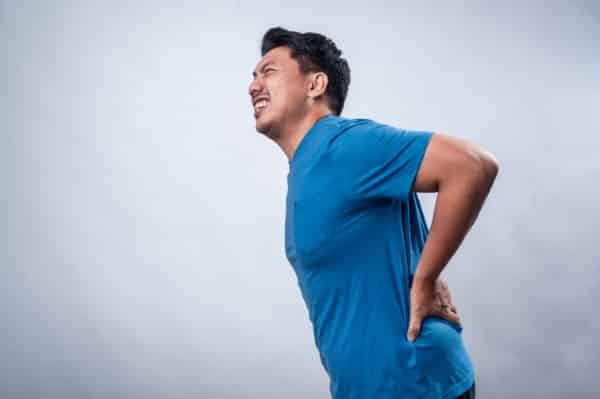
A back muscle strain happens when you stretch or tear the muscles in your back. Think of your muscles like rubber bands. When you pull a rubber band too far, it can stretch or even snap. Your back muscles work the same way. When you put too much stress on them, they can get damaged.
Your back has many muscles that work together. They help you stand, bend, and twist. The main muscles in your back include the trapezius, latissimus dorsi, and erector spinae. These muscles can all be strained if you push them too hard. The erector spinae muscles along your spine are often involved in lower back strains.
Medical research from the Journal of Orthopaedic & Sports Physical Therapy explains that strains can be mild, moderate, or severe. A mild strain means you’ve slightly stretched the muscle. A severe strain means you’ve torn the muscle badly. Most people deal with mild to moderate strains that heal with proper care.
Back muscle strains can occur in many different ways. Let’s look at the most common causes. You might recognize some from your own life. Understanding how strains happen is the first step to preventing them.
Lifting heavy objects incorrectly puts major stress on your back muscles. Using your back instead of your legs to lift creates too much strain. This is one of the most common causes of back muscle injuries. Many people strain their backs when moving furniture or carrying heavy bags.
Sudden movements can also lead to back strains. Turning or twisting too quickly can catch your muscles off guard. Your muscles aren’t ready for the movement, and they get overstretched. This often happens during sports or even just reaching for something.

Poor posture is another big culprit. Slouching at your desk or looking down at your phone strains your back over time. A 2019 study in BMC Musculoskeletal Disorders found that people with poor posture were more likely to have back pain. Your muscles work harder when your posture is bad.
Repeating the same movements can wear out your back muscles. This is called repetitive strain. Factory workers, nurses, and even office workers often deal with this. Their jobs require them to use the same muscles over and over again without enough rest.
How do you know if you’ve strained your back? Your body will give you clear signals. Pain is the most obvious sign. It usually starts suddenly when you strain a muscle. The pain might feel sharp at first, then become a dull ache.
Movement becomes difficult with a strained back. Simple tasks like getting out of bed or putting on shoes become painful challenges. You might find yourself moving more slowly and carefully than usual. Certain movements may cause the pain to get worse.
Muscle spasms often come with back strains. These are sudden, involuntary contractions of your back muscles. They can be quite painful and may come in waves. Your back might feel like it’s cramping up or twitching on its own.
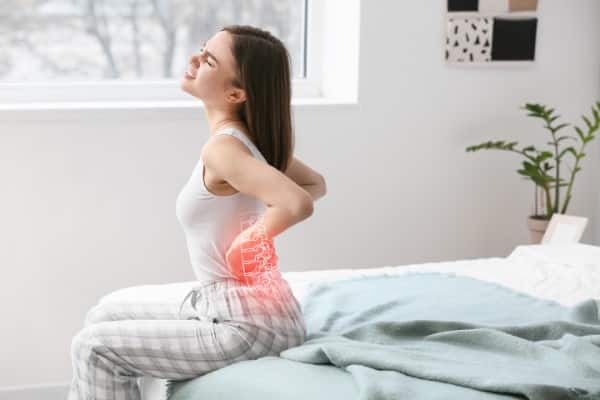
Swelling and tenderness in the injured area are common. The area might feel warm to the touch. This happens because your body sends extra blood to the injury to help it heal. This increased blood flow causes inflammation and swelling.
Stiffness develops as your body tries to protect the injured area. Your range of motion decreases. You might find it hard to bend, twist, or straighten your back fully. This stiffness often gets worse after resting, like when you wake up in the morning.
According to research published in The Spine Journal, these symptoms typically appear within 24 hours of the injury. They may last anywhere from a few days to several weeks. The severity of your symptoms depends on how badly you’ve strained your muscles.
Healing from a back strain follows a predictable pattern. Understanding this timeline can help you know what to expect. It can also help you avoid doing too much too soon, which might make your injury worse.
The acute phase comes first, lasting about 24-72 hours after the injury. This is when pain and inflammation are at their worst. Your body is responding to the injury by sending extra blood to the area. This causes swelling but also brings healing cells.
The subacute phase follows, lasting from 3 days to 3 weeks. During this time, pain starts to decrease. Your body begins repairing the damaged muscle fibers. You’ll start to regain some movement, though you’ll still have limitations. This is a critical healing time.
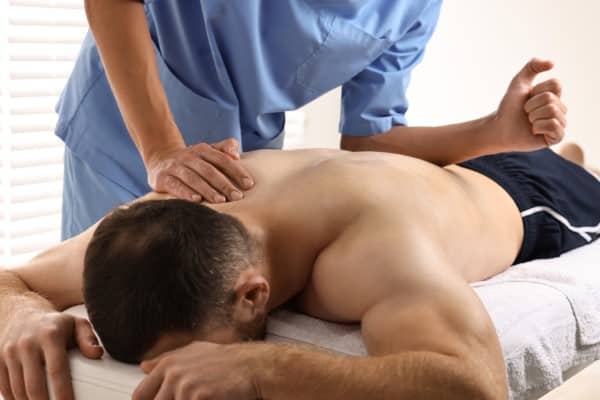
The remodeling phase is the final stage. It can last from 3 weeks to several months. Your body continues to strengthen the repaired muscle tissue. Full function gradually returns. Even though pain may be gone, the muscle is still healing and getting stronger.
Research from the American Journal of Sports Medicine shows that most back strains heal within 4-6 weeks. However, severe strains may take longer. About 10% of back strains become chronic problems. This usually happens when people don’t allow proper healing time.
The first 48 hours after a back strain are crucial for recovery. What you do during this time can affect how quickly you heal. Most medical experts recommend following the R.I.C.E. protocol: Rest, Ice, Compression, and Elevation.
Rest doesn’t mean complete bed rest. It means avoiding activities that cause pain. Too much rest can actually slow healing by causing muscle weakness. Try to maintain gentle movement while avoiding painful positions. Short walks are often helpful for recovery.
Ice therapy reduces pain and swelling. Apply ice to your back for 15-20 minutes every few hours. Always wrap the ice pack in a thin towel to protect your skin. Ice works by narrowing blood vessels and reducing inflammation.
Over-the-counter pain medications can help manage discomfort. Non-steroidal anti-inflammatory drugs (NSAIDs) like ibuprofen reduce both pain and swelling. Acetaminophen helps with pain but doesn’t reduce inflammation. Always follow dosage instructions carefully.
Gentle stretching becomes important after the first few days. This helps prevent stiffness and promotes blood flow to the injured area. A study in the Clinical Journal of Pain found that early, gentle stretching led to faster recovery times. Start with very easy stretches.
Heat therapy works well after the first 48 hours. Warm compresses or heating pads increase blood flow to the injured muscles. This brings more oxygen and nutrients to help with healing. Apply heat for 15-20 minutes at a time.
Physical therapy offers structured recovery for more serious strains. A physical therapist can design exercises specifically for your injury. They gradually rebuild strength and flexibility in your back muscles. This helps prevent future injuries as well.
Massage therapy stands out as one of the most effective treatments for back strains. Different types of massage offer unique benefits. Let’s explore how massage helps your strained back muscles heal more effectively.
Swedish massage uses long, flowing strokes to improve circulation. Better blood flow means more oxygen and nutrients reach your injured muscles. A 2014 study in the International Journal of Therapeutic Massage & Bodywork found that Swedish massage significantly reduced back pain. Patients reported less pain after just a few sessions.

Deep tissue massage targets the deeper layers of muscle. It helps break up scar tissue that forms after an injury. This type of massage can be slightly uncomfortable but very effective. It releases chronic muscle tension and helps realign muscle fibers.
Trigger point therapy focuses on specific knots in muscles. These knots, called trigger points, can cause pain throughout your back. A massage therapist applies direct pressure to these points. Research from the Journal of Physical Therapy Science shows this can provide immediate pain relief.
Sports massage combines techniques to help athletes recover. It improves flexibility and prevents future injuries. Even if you’re not an athlete, sports massage can help your strained back heal faster. It keeps your muscles loose and promotes better movement patterns.
Massage offers benefits beyond physical healing. It reduces stress hormones like cortisol. High stress levels can slow healing and increase pain sensitivity. By promoting relaxation, massage helps create optimal conditions for recovery. Your body heals better when it’s relaxed.
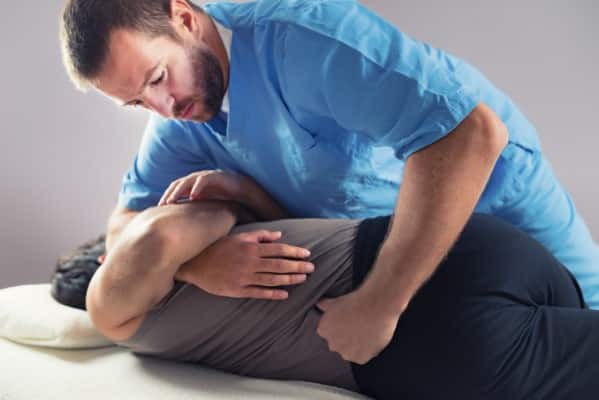
Chiropractic care takes a different approach to healing back strains. Chiropractors focus on your spine’s alignment. They believe proper alignment helps your body heal itself naturally. This approach has helped many people recover from back strains.
Spinal adjustments are the main treatment chiropractors provide. These are precise movements that realign vertebrae in your spine. When your spine is properly aligned, nerve signals flow better. This can reduce pain and help muscles heal. The adjustments often make a popping sound.
Research supports chiropractic care for back pain. A study in the Journal of Manipulative and Physiological Therapeutics compared chiropractic care to medical care. Patients receiving chiropractic treatment reported better pain relief. They also had fewer limitations in their daily activities.
Chiropractors do more than just adjustments. They often provide education about posture and movement. They might teach you exercises to strengthen your core. Many also offer advice about ergonomics. This comprehensive approach helps prevent future back strains.
The effects of chiropractic care can be both immediate and long-term. Many people feel relief right after an adjustment. Over time, regular treatments help maintain proper alignment. This reduces stress on back muscles. Your body can function more efficiently.
The combination of massage and chiropractic care creates a powerful healing approach. These treatments complement each other perfectly. Together, they address both muscle tension and spinal alignment. This comprehensive approach speeds up recovery from back strains.
Massage therapy prepares your body for chiropractic adjustments. It relaxes tight muscles around your spine. When muscles are relaxed, adjustments become more effective. The chiropractor can more easily move vertebrae into proper alignment. This makes the treatment more comfortable too.

A typical combined treatment plan might start with massage. The massage therapist works on relaxing your back muscles. They focus on areas of tension related to your strain. Then you receive chiropractic adjustments. The chiropractor realigns your spine now that your muscles are relaxed.
Research from the Journal of Alternative and Complementary Medicine supports this combined approach. Their study followed patients with lower back pain. One group received only chiropractic care. Another received both massage and chiropractic treatments. The combined therapy group reported better outcomes. They experienced greater pain reduction and improved function.
Many healthcare providers now offer both services in one location. This integrated approach treats your back pain more efficiently. It saves you time and provides more consistent care. Your providers can communicate directly about your treatment plan.
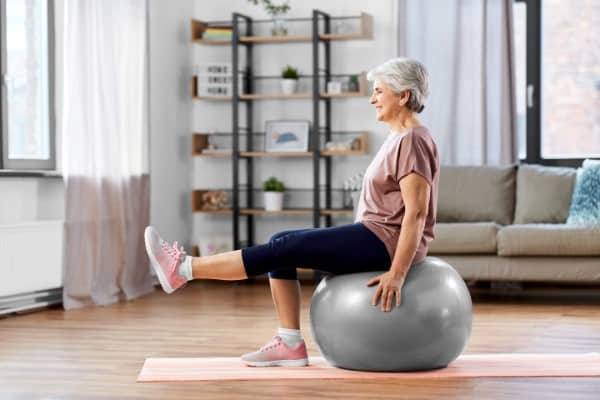
Once you’ve recovered from a back strain, you’ll want to prevent another one. Several simple strategies can help keep your back healthy and strong. Prevention is always easier than recovery. Make these practices part of your daily routine.
Good posture reduces stress on your back muscles. Keep your ears, shoulders, and hips aligned when sitting or standing. Use a chair with proper lumbar support. Set up your workspace ergonomically. Check your posture throughout the day.
Strengthen your core muscles to support your back. Your abs and back muscles work together as a natural brace. Planks, bridges, and bird-dogs are excellent exercises. Start with simple versions and progress gradually. Even five minutes of core work daily helps.
Lift properly using your legs, not your back. Keep objects close to your body. Bend at the knees, not the waist. Ask for help with heavy items. Plan your lift before you start. These simple steps prevent many back strains.
Stretch regularly to maintain flexibility. Tight muscles are more prone to strains. Focus on your hamstrings, hip flexors, and back muscles. Hold stretches for 30 seconds without bouncing. Gentle yoga can be particularly beneficial for back health.
Maintain a healthy weight to reduce strain on your back. Extra weight, especially around the midsection, pulls on your lower back. It changes your center of gravity. Even losing a small amount of weight can significantly reduce back pain.
Take breaks when doing repetitive tasks. Change positions frequently. Stand up and stretch if you’ve been sitting for an hour. Your back needs movement to stay healthy. Static positions increase pressure on certain muscles and discs.
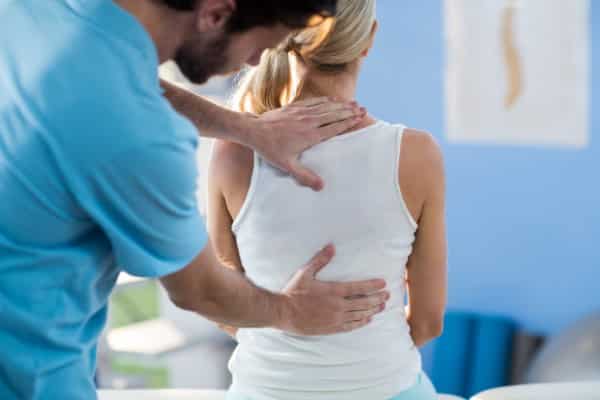
Most back strains heal with home care and time. However, some situations require medical attention. Knowing when to see a doctor is important. Don’t ignore these warning signs. They could indicate a more serious problem than a simple strain.
Severe pain that doesn’t improve with rest needs medical evaluation. Pain that wakes you from sleep or prevents normal movement is concerning. A doctor can determine if something beyond muscle strain is causing your pain. They might order imaging tests.
Numbness or tingling suggests nerve involvement. This might feel like pins and needles in your legs or feet. It could indicate pressure on a nerve. Muscle weakness in your legs is another red flag. These symptoms require prompt medical attention.
Loss of bladder or bowel control is a medical emergency. This rare but serious symptom could indicate cauda equina syndrome. This condition requires immediate surgical intervention. Go to the emergency room if you experience these symptoms.

Pain lasting more than two weeks without improvement should be checked. Your doctor can reassess your condition and adjust your treatment plan. They might recommend physical therapy or other interventions. Persistent pain might need different management strategies.
The American College of Physicians recommends starting with conservative treatments. These include the approaches we’ve discussed. If these don’t help, your doctor might suggest stronger medications or procedures. Always follow your healthcare provider’s advice for your specific situation.
Back muscle strains can be painful and disruptive. They affect your ability to work, exercise, and enjoy life. However, with proper care, most back strains heal completely. The recovery process takes time and patience. Be gentle with yourself during healing.
The combination of rest, appropriate movement, massage, and chiropractic care offers an effective recovery path. These approaches work together to address different aspects of your injury. They help reduce pain while promoting healing. Following this comprehensive approach speeds recovery.
Prevention becomes key after recovery. Strengthening your core, maintaining good posture, and lifting properly protect your back. These simple habits reduce your risk of future strains. They keep your back healthy and resilient against everyday stresses.
Listen to your body throughout the healing process. It will tell you what it needs. Progress may not be linear. You might have good days and bad days. Gradually, the good days will outnumber the bad. Your back will become stronger and more flexible.
Remember that you’re not alone in dealing with back pain. Millions of people experience back strains every year. Many healthcare professionals specialize in back care. Don’t hesitate to seek help when needed. With the right approach, you can overcome back strain and return to a pain-free life.

Scott has more than 20 years of clinical experience as a movement expert and musculoskeletal health professional. His thorough understanding of how pain affects your spine, joints, muscles, and total well-being is the result of significant academic study and many many years of clinical experience. Scott’s real interest in movement mechanics enables him to develop individualised care plans that summarise complex problems into clear, simple treatments, leading to quicker healing times. His friendly, attentive approach ensures that you not only comprehend but also feel supported throughout your treatment journey, allowing you to return to the things you like with restored confidence and vitality.
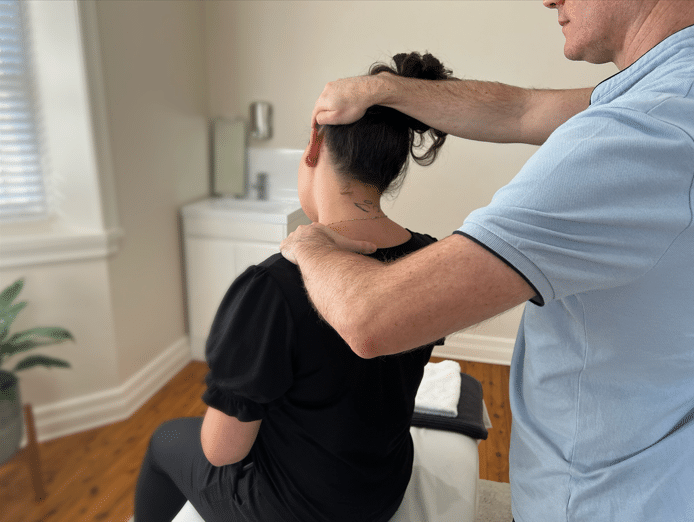
Forest Lodge, Annandale, Glebe, Leichhardt, Balmain, Haberfield, Canada Bay, Rozelle, Rodd Point, Wareemba, Stanmore, Petersham, Lilyfield, Hunters Hill, Enfield, Cabarita, Mortlake, Rhodes, Burwood Heights, Birchgrove, Gladesville, Huntleys Point, Abbotsford, Ashfield, Croydon Park, Croydon, Chiswick, Russell Lea, Burwood, Strathfield, Concord, Drummoyne, North Strathfield, Liberty Grove, Dulwich Hill, Lewisham, Camperdown, Ashbury, Homebush, Homebush West, Woolwich, Henley, Summer Hill, Sydney Olympic Park
About
Five Dock Osteopathic & Chiropractic is located in Canada Bay, in Sydney’s Inner West. Servicing suburbs including Burwood, Croydon, Drummoyne, Five Dock, Haberfield, Concord, Abbotsford, Chiswick, Leichhardt, Wareemba, Russell Lea, Summer Hill, Strathfield.
Clinic hours
Monday, Tuesday, Thursday 7AM – 7PM
Wednesday, Friday 7AM – 6PM
Saturday 7AM – 2PM
Sunday 8AM – 2PM
Contact details